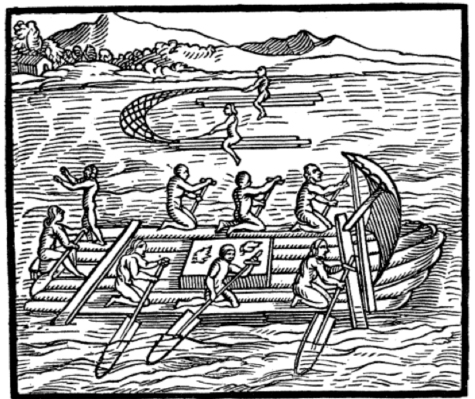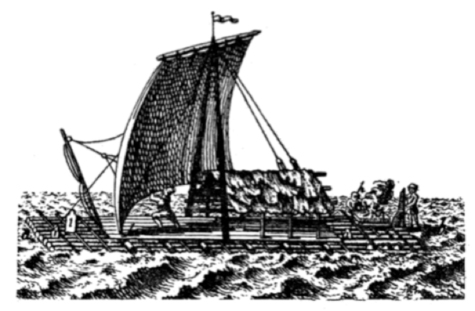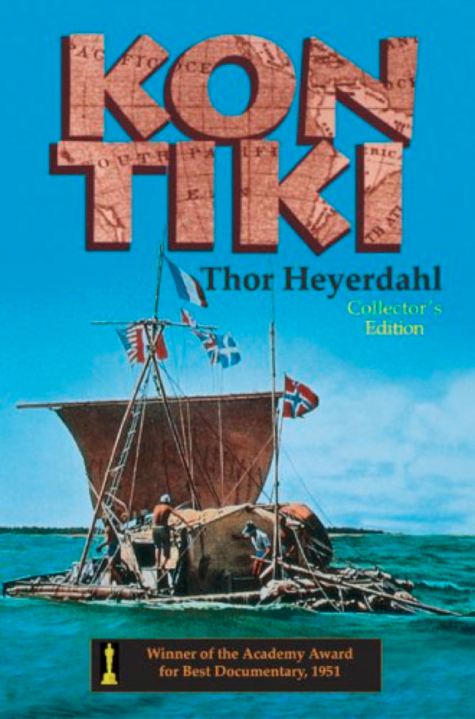This wooden object, which has been at the DMA since 1975, was misinterpreted as a “ceremonial digging board.” Walking through the galleries of Peruvian art, I was struck by the large size and stark, seemingly utilitarian design of this object and was encouraged to research it.
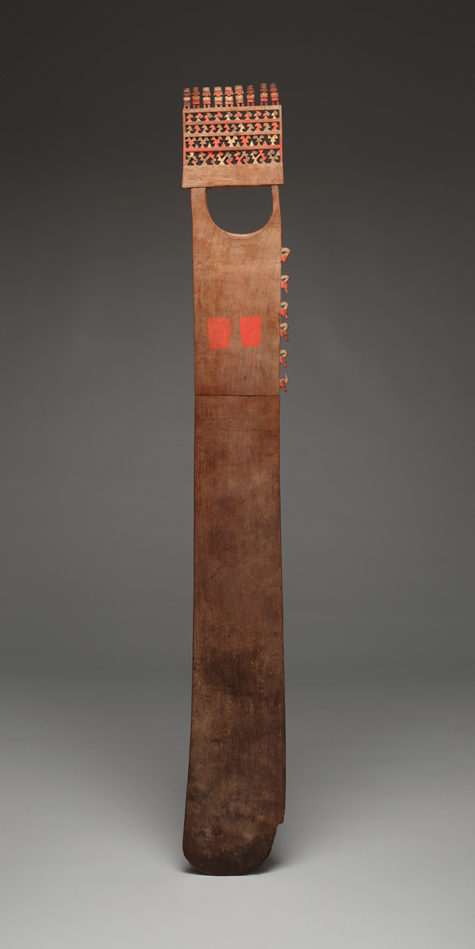
Ceremonial digging board, Peru, Ica Valley, Ica, 1476–1532, wood and paint, Dallas Museum of Art, The Eugene and Margaret McDermott Art Fund, Inc., 1975.24.McD
The figures are beautifully painted and remarkably well preserved. At the very top stand nine small, enigmatic figures. Underneath those are four rows of geometric designs, while six small water birds line the side. But other than the carvings at the top, it is a plain board. Because most “art objects” of the Americas are often practical as well, I wondered what functions this could have had. Investigations into similar objects of this type yielded an interesting new interpretation. We now know that it is a steering centerboard, and represents a fascinating and extremely useful sailing tradition.
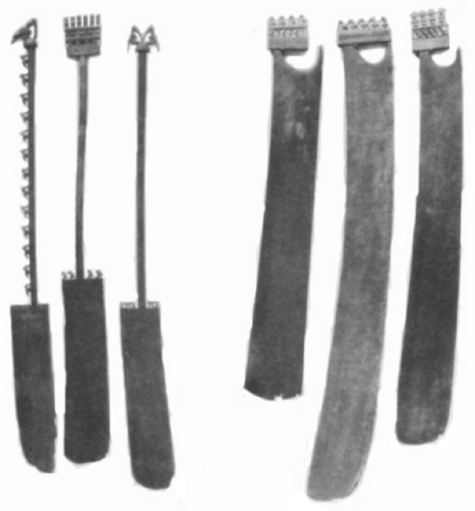
From Lothrop, Aboriginal Navigation off the West Coast of South America. Journal of Royal Anthropological Institute Volume LXII, 1932.
Boards with the exact same shape and similar carving have been found in graves of the very rich on the south coast of Peru. The associated grave goods and the fine quality of these carvings (some were even found covered with gold foil!), indicate that these were high status objects.
The Ica
These boards were associated with the Ica culture of Peru, who preceded the Inca Empire and were located in the very dry desert on the south coast. The Ica culture flourished from about 1100-1300, before being taken over by the Inca Empire.
How Was It Used?
When archaeologists started finding these wooden boards in the early 1900s, they classified them as ceremonial agricultural implements or ceremonial digging sticks. Through the research of anthropologists, we now know that this type of object had a very different function.
This object is a centerboard used for navigating large balsa wood rafts on the Pacific Ocean. Though not exactly a rudder, it functions in a similar way, steering the craft. Through the interplay of sails and the movements of several of these centerboards, balsa wood rafts carrying up to twenty tons of cargo and as many as fifty people could travel all along the coast of Peru and Ecuador. We have some evidence that they traveled as far as the Pacific Islands, a distance of over four thousand miles!
How Do We Know?
Anthropologists in the 1940s were interested in the maritime techniques and capabilities of the ancient Peruvians. Most objects associated with sailing did not survive, since they were made of perishable materials like wood and cotton. The wooden paddles and centerboards (like ours) do survive, because they were purposefully buried in the graves of high-status people. The dry desert conditions on the south coast of Peru allowed them to remain intact, and archaeologists started finding them in the early 20th century.
One important scholar, Thor Heyerdahl, spent years researching Peruvian navigation and sailing. He actually built a balsa log raft modeled on ancient vessels, and named it Kon-Tiki. Heyerdahl and five companions tested the sea-worthiness of their vessel and several of their other theories on trans-Pacific contact between native peoples. They sailed for 101 days over 4,300 miles across the Pacific Ocean, ending August 7, 1947. A documentary called Kon-Tiki detailing their voyage—with all its challenges and successes—was made in 1950. It went on to win the Academy Award for Best Documentary in 1951 and is being remade in Norway to be released in 2012.
You can watch the movie online here: http://www.youtube.com/watch?v=gGooopCTmpg
Many Uses
Some of the rafts seen by the earliest Europeans off the Andean coast carried merchants and tons of cargo on board. Others were used for army transportation and the conquest and control of warlike islanders off the empire coast. Still others were used by fishermen who went on extensive expeditions. The Spaniards even recorded Inca memories of individual merchant rafts and large, organized raft flotillas that set out on exploring expeditions to remote islands.
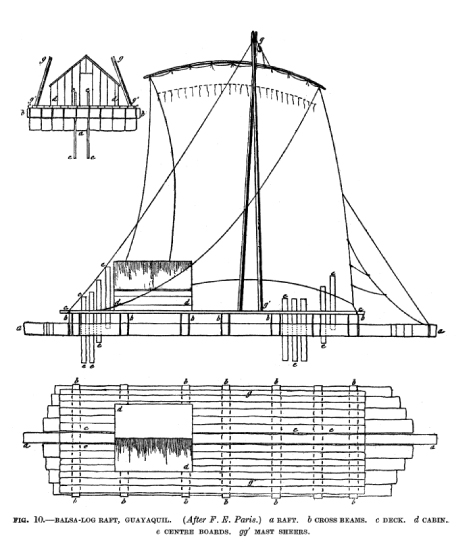
Diagram of a large Balsa-Log Raft. From Lothrop, Aboriginal Navigation off the West Coast of South America. Journal of Royal Anthropological Institute Volume LXII, 1932.
Raftsmen in north Peru were great mariners who played fatal tricks on Spaniards who voyaged as passengers on their balsa rafts. The natives simply detached the ropes holding the log raft together, and the Spaniards fell through and drowned while the sailors survived because they were outstanding swimmers. Other early chroniclers state that even before the arrival of the Spaniards the coastal Peruvians, who “swam as well as fishes,” lured the highland Incas into the open ocean on balsa rafts, only to undo the lashings of the logs and drown their less sea-minded passengers.
Wendy Earle is the McDermott Graduate Curatorial Intern for Arts of the Americas and the Pacific.

